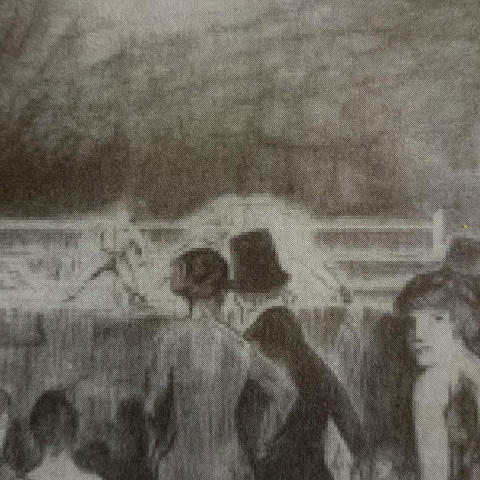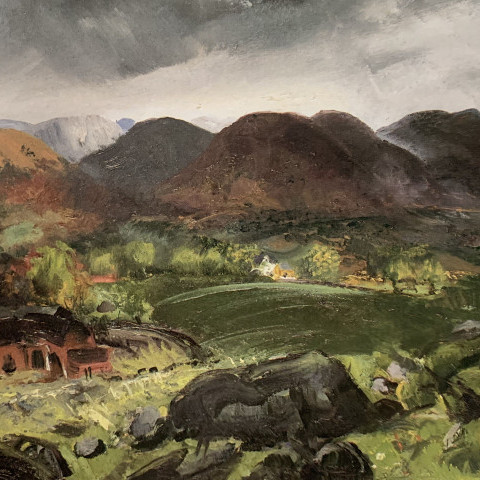George Wesley Bellows (August 12 or August 19, 1882 – January 8, 1925) was an American realist painter, known for his bold depictions of urban life in New York City, becoming, according to the Columbus Museum of Art, "the most acclaimed American artist of his generation".
George Wesley Bellows was born and raised in Columbus, Ohio. He was the only child of George Bellows and Anna Wilhelmina Smith Bellows (he had a half-sister, Laura, 18 years his senior). He was born four years after his parents married, at the ages of fifty (George) and forty (Anna). His mother was the daughter of a whaling captain based in Sag Harbor, Long Island, and his family returned there for their summer vacations. He began drawing well before kindergarten, and his elementary–school teachers often asked him to decorate their classroom blackboards at Thanksgiving and Christmas.
At age 10 George decided to become an athlete, and trained himself to become a popular baseball and basketball player. He became good enough at both sports to play semipro ball for years afterward. During his senior year, a baseball scout from the Indianapolis team made him an offer. He declined, opting to enroll at The Ohio State University (1901–1904). There he played for the baseball and basketball teams, and provided illustrations for the Makio, the school's student yearbook. He was encouraged to become a professional baseball player, and he worked as a commercial illustrator while a student and continued to accept magazine assignments throughout his life. Despite these opportunities in athletics and commercial art, Bellows desired success as a painter. He left Ohio State in 1904 just before he was to graduate and moved to New York City to study art.
Bellows was soon a student of Robert Henri, before the later-famous artist had set up his own famous school, who at the time was teaching at the New York School of Art. While studying there, Bellows became associated with Henri's "The Eight" and the Ashcan School, a group of artists who advocated painting contemporary American society in all its forms. By 1906, Bellows and fellow art student Edward Keefe had set up a studio at 1947 Broadway Street.
Bellows first achieved widespread notice in 1908, when he and other pupils of Henri organized an exhibition of mostly urban studies. While many critics considered these to be crudely painted, others found them welcomely audacious, a step beyond the work of his teacher. Bellows taught at the Art Students League of New York in 1909, although he was more interested in pursuing a career as a painter. His fame grew as he contributed to other nationally recognized juried shows.
Bellows' urban New York scenes depicted the crudity and chaos of working-class people and neighborhoods, and satirized the upper classes. From 1907 through 1915, he executed a series of paintings depicting New York City under snowfall. In these paintings Bellows developed his strong sense of light and visual texture, exhibiting a stark contrast between the blue and white expanses of snow and the rough and grimy surfaces of city structures, and creating an aesthetically ironic image of the equally rough and grimy men struggling to clear away the nuisance of the pure snow. However, Bellows' series of paintings portraying amateur boxing matches were arguably his signature contribution to art history. They are characterized by dark atmospheres, through which the bright, roughly lain brushstrokes of the human figures vividly strike with a strong sense of motion and direction.
Source: Wikiart.org


